‘An American in Paris’ Joins ‘Gigi’ In Broadway’s ’50s Revival: Review
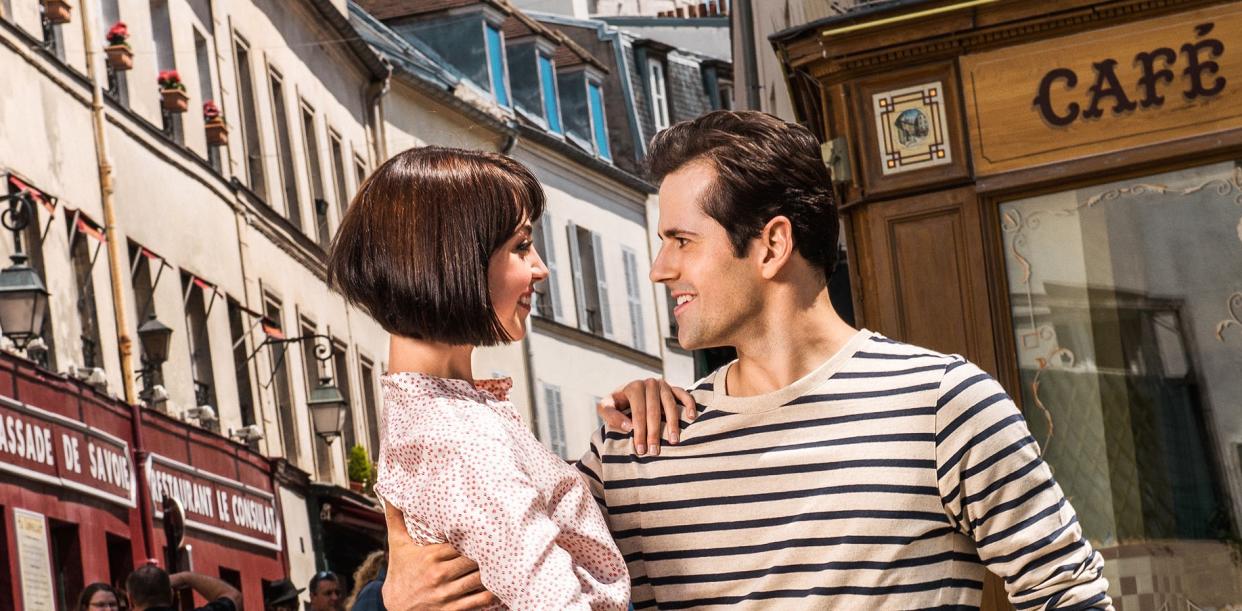
UPDATE Sunday 8:30 P.M.: Adds Gigi review, following An American In Paris, below.
In the weird time warp that Broadway sometimes can be, this season offers Betty Comden and Adolph Green owning 42nd Street with concurrent revivals of On The Town and On The Twentieth Century, while a few blocks north the MGM musicals of Arthur Freed have been transported to the stage via Gigi at the Neil Simon and, bowing Sunday night at the Palace, An American In Paris, the 1951 film that won Oscars for practically everyone involved except director Vincente Minnelli and newcomer Leslie Caron.

If you include Twyla Tharp’s 1985 production of Comden and Green’s Hollywood masterpiece Singin’ In The Rain, for which the songsmiths wrote the screenplay, you would have to conclude that the Freed musicals have generally fared better on screen than on the boards. An American In Paris comes with a lengthy pedigree – songs by the Gershwin brothers, of course; spectacular dancing in the leading roles by Robert Fairchild and Leanne Cope (he of the New York City Ballet; she of the Royal Ballet, both in their Broadway debuts) as the characters immortalized by Gene Kelly and Leslie Caron; and staging by Christopher Wheeldon, one of the busiest dance makers on the world stage today and also making his Broadway debut as director and choreographer. The show even boasts a tryout in the City of Lights, where it garnered excellent reviews last fall at the Théâtre du Châtelet.
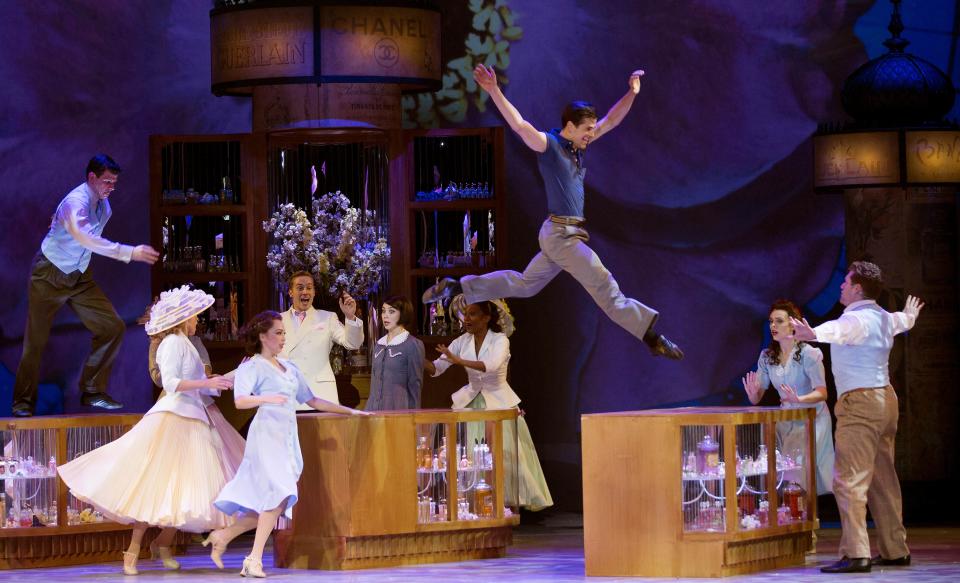
Visually sumptuous and musically rapturous – and really, what more could you ask for? – the show has so many charms.
And yet, like that earlier Tharp production, An American In Paris is fabulous looking but vacant. It’s a dance show that features some wonderful dancing yet never takes flight. It’s lifeless at the center, for two reasons: First, unlike Gene Kelly, who won a special Oscar essentially for the dances he created for the film, Wheeldon is a creature of the ballet stage. Kelly was a Broadway pro who, like Agnes De Mille and Jerome Robbins, knew how to make a Broadway stage catch fire. Wheeldon, conversely, has no Broadway dance vocabulary, and the result is big production numbers, including the legendary final “American In Paris” ballet, that are physically challenging and yet seem unintergrated, undernourished and underpopulated.
The second reason is a bit more complicated. For the show, a new book has been written by Craig Lucas (Prelude To A Kiss). It’s not as though he was tampering with a masterpiece; indeed, Alan Jay Lerner’s screenplay offered the flimsiest of excuses to repurpose a quiverful of great Gershwin songs and showcase the irresistible partnering of Kelly and Caron in the story of post-War Paris, where American soldier Jerry Mulligan (Fairchild) has chosen to remain to pursue his dream of becoming an artist. He befriends Adam (Brandon Uranowitz, in the Oscar Levant role), a young composer and falls in love with shopgirl Lise Dassin (Cope in the Caron role), who has grown up under the protection of the Baurel family and whose grown son, an entertainer (Max Von Essen), also is in love with her. When Jerry catches the eye of Milo Davenport (the wonderful Jill Paice), a wealthy arts patroness of a certain age who hopes to patronize her way into his bed, she agrees to underwrite a ballet for Lise that Adam will compose and Jerry will design.
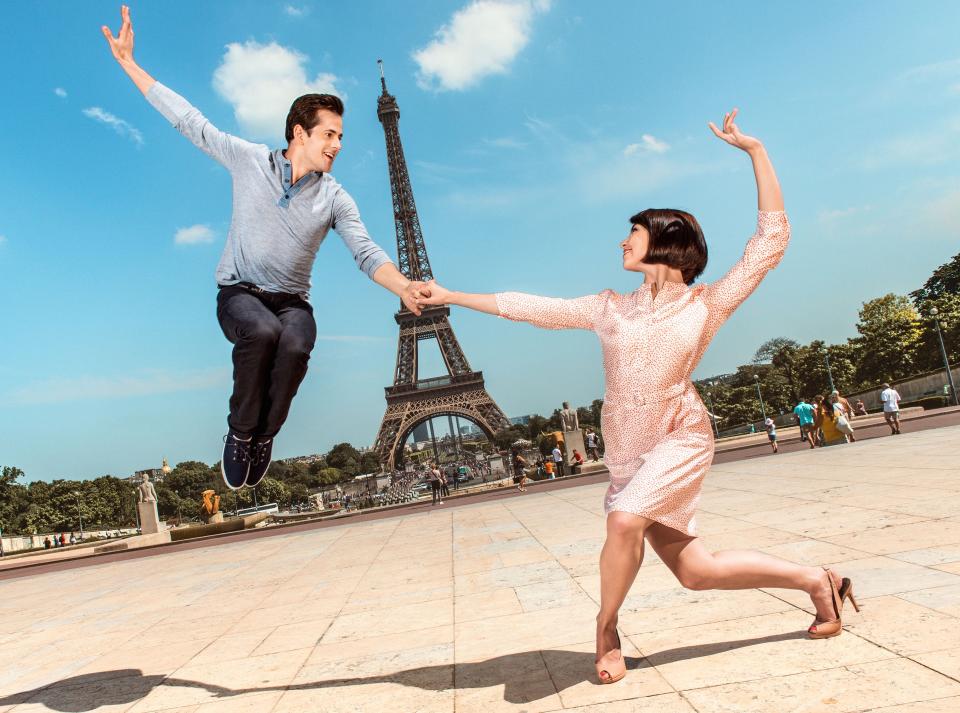
Lucas has made the implications of that tale more turgidly, if honorably, clear: Jerry introduces a very different late-’40s Paris than the picturesque travelogue offered by Minnelli: It’s war-torn and still reeling from the Nazi Occupation. Breadlines form along the Boulevard St. Germain.
“How can you feel liberated when your city has been crushed?” asks Adam, serving as narrator. We learn that Lise is Jewish and that the Baurels hid her at great risk during the war. There’s not much humor in it (though a funny nod by Adam to Levant). If Lucas had rewritten Howard Lindsay and Russel Crouse’s book for The Sound Of Music, well, I’m not sure I even want to go there. Suffice it to say, I found the emendations worthy but edging very close to tasteless in the context provided here: a Champagne score and potato-soup story have nothing in common other than both being comestibles.
On one matter, however, An American In Paris soars: Bob Crowley has outdone himself as designer of the kinetic sets and gorgeous costumes, with splendrous assists from lighting designer Natasha Katz and the projections by 59 Productions. Crowley and his team brilliantly emulate the whimsically suggestive Oscar-winning designs by Preston Ames and Cedric Gibbons (art direction); Warren Newcombe and Irving G. Reis (special effects); Edwin B. Willis and F. Keogh Gleason (set decoration); and Peter Ballbusch, (montages). Crowley (also represented in the current revival of Skylight) has emerged as the unsurpassed design genius of our time; there are echoes here, in his love of geometric form, of his ingenious setting for Carousel back in the early 1990s, and a keen sensitivity to letting the music and the dance remain the focus of the evening. This is one show I departed, most joyfully, humming the scenery.
Alan Jay Lerner in lyricist mode is in full bloom at the Neil Simon Theatre, where a revival of Lerner and Loewe’s Gigi has been built around the Broadway debut of Vanessa Hudgens, star of
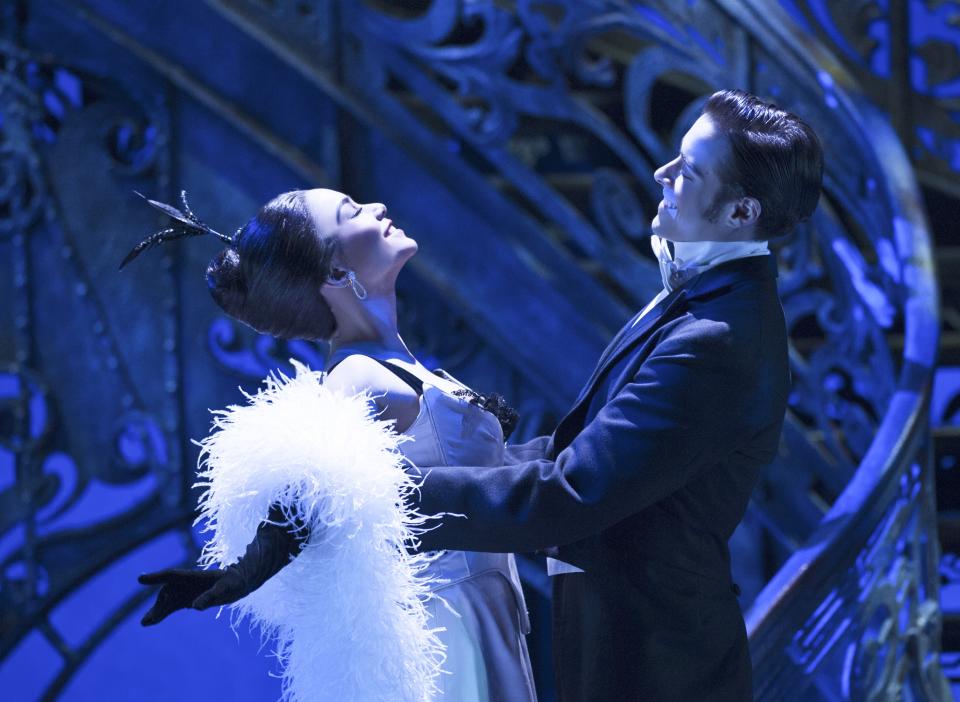
Disney’s High School Musical franchise. She certainly looks the part of the lovely girl-who-would-be-woman, and she dances well and sings strongly, though I find her voice unpleasantly harsh. (Hudgens will co-star in next year’s live-musical-telecast on NBC, in Grease.) She’s surrounded by a strong cast that includes Corey Cott, late of Newsies, as her wealthy suitor Gaston; Howard McGillin, a veteran of Phantom Of The Opera, as Honoré, the old lech who thanks heaven for little girls; Dee Hoty, of The Will Rogers Follies, as worldly Aunt Alicia, and Victoria Clark (Cinderella) as Gigi’s grandmother Mamita.
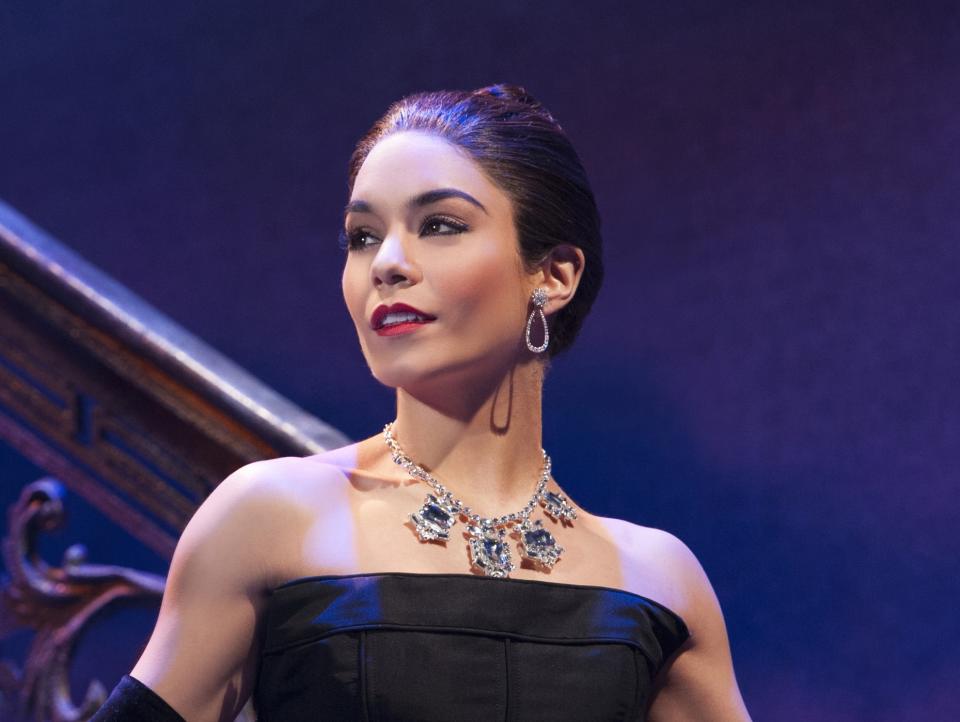
Because the protofeminist novella by Collette, about a Paris girl groomed to be a self-sufficient courtesan, was turned by Lerner & Loewe into something rather more politically incorrect, the current production has also undergone a change of books to bleach out any unseamliness. So, for example, “Thank Heaven For Little Girls” has been hot-potatoed from Honoré to a duet for Gigi’s guardian ladies, which is too-too, and the virtues of married love are wholesomely emphasized.
Victoria Clarke was ill the night I saw the show and her understudy, Madeleine Doherty, was terrific. The production is staged by Eric Schaeffer, with choreography by Joashua Bergasse, both very talented and here in a conventional mode. There are no surprises, of either the negative or the especially positive sort.
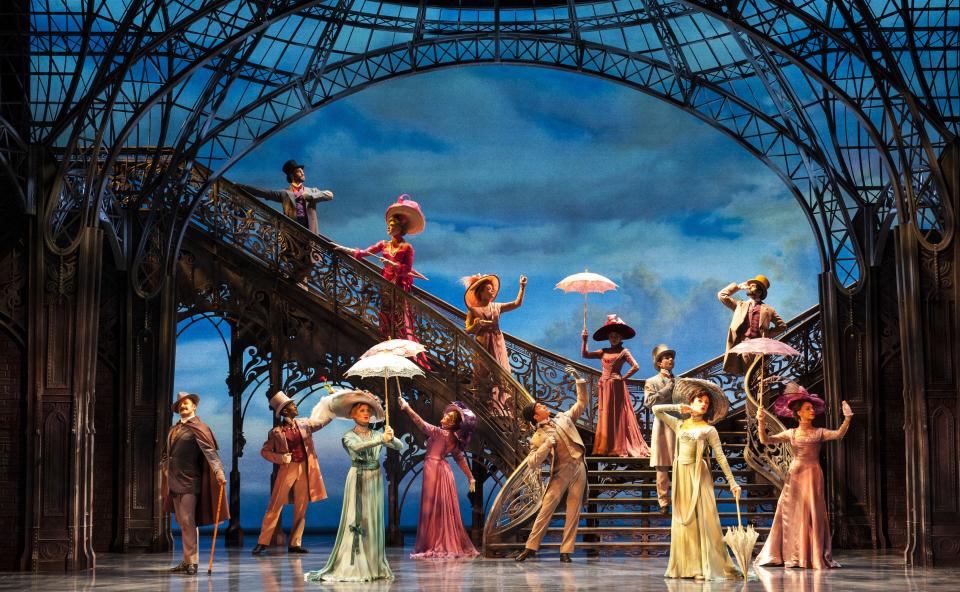
Well, except for the atypically drab scenery by Derek McLane, resembling mostly the elevated IRT structure at 125th Street & Broadway (it looks better there); and the equally uncharacteristic lighting by Natasha Katz, which is oddly doom-and-gloom. Catherine Zuber’s beguiling costumes, from haute société to Folies Bèrgere, are a high point. Hudgens fans, apparently legion, were not disappointed. We were all doused with soapy Champagne bubbles at the curtain, which somehow seemed apt.
Related stories
New York Minute: Post-'Holler' Palace Books 'Paris'; Rte. 57 Revisited; James Franco Directs
WB Markets eBook Shooting Scripts
'Avengers: Age of Ultron' Cast Assembles On 'Jimmy Kimmel Live'
Get more from Deadline.com: Follow us on Twitter, Facebook, Newsletter

